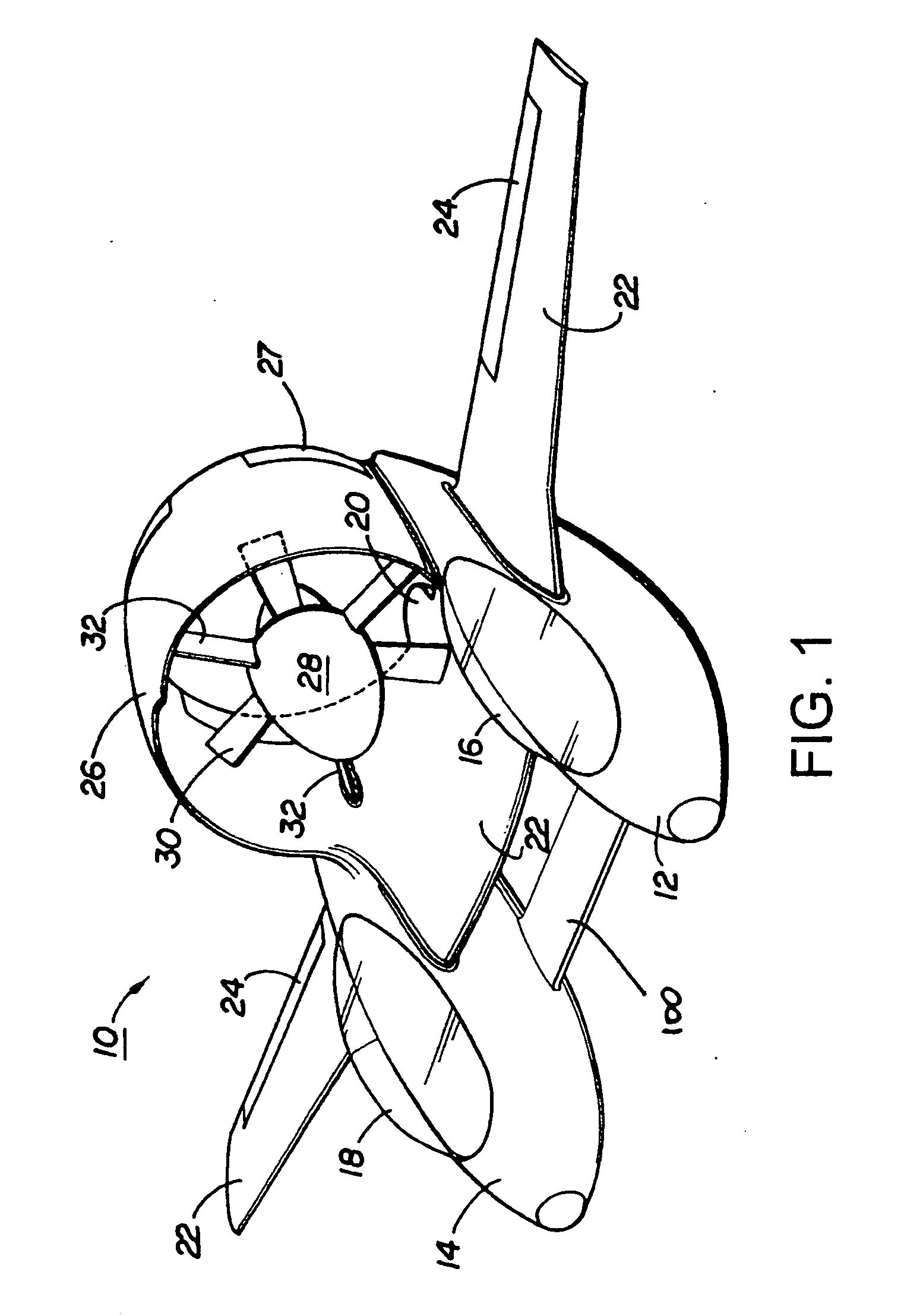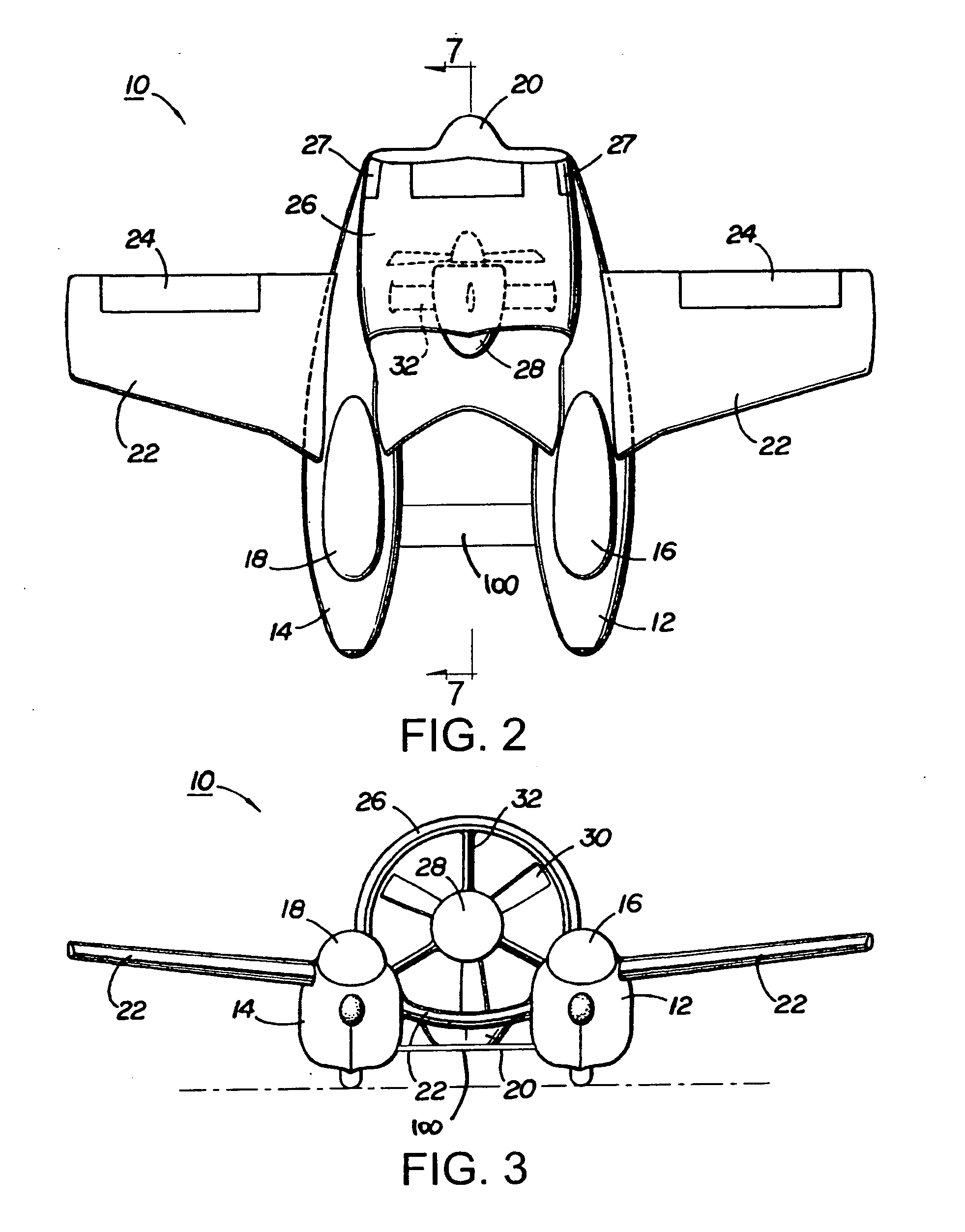Hydrofoil for an amphibious aircraft
a technology for amphibious aircraft and hydrocarbons, which is applied in the direction of propellers, seaplanes, transportation and packaging, etc., can solve the problems of reducing the range and airspeed of aircraft, degrading the maneuverability of aircraft, and affecting the efficiency of power plants, so as to improve the displacement of aircraft and improve the effect of power plant efficiency
- Summary
- Abstract
- Description
- Claims
- Application Information
AI Technical Summary
Benefits of technology
Problems solved by technology
Method used
Image
Examples
Embodiment Construction
[0040]FIGS. 1-7 all show one preferred embodiment of an amphibious aircraft with a hydrofoil according to a preferred embodiment of the present invention. FIG. 8 shows another preferred embodiment of an amphibious aircraft with a hydrofoil according to a preferred embodiment of the present invention. FIGS. 9 and 10 show methods of use of an amphibious aircraft with a hydrofoil according to embodiments of the invention.
[0041] The embodiment shown in FIGS. 1-7 features a hydrofoil 100, or other control apparatus, mounted to a twin fuselage, twin hull seaplane or amphibious aircraft 10. The hydrofoil 100 is capable of reducing drag and increasing lift of the amphibious aircraft during takeoffs and landings. Moreover, the hydrofoil is capable of increasing stability, maneuverability, and control of the amphibious aircraft during takeoffs and landings. Furthermore, the hydrofoil 100 is capable of providing additional displacement for the amphibious aircraft during landings. In this embo...
PUM
 Login to View More
Login to View More Abstract
Description
Claims
Application Information
 Login to View More
Login to View More - R&D
- Intellectual Property
- Life Sciences
- Materials
- Tech Scout
- Unparalleled Data Quality
- Higher Quality Content
- 60% Fewer Hallucinations
Browse by: Latest US Patents, China's latest patents, Technical Efficacy Thesaurus, Application Domain, Technology Topic, Popular Technical Reports.
© 2025 PatSnap. All rights reserved.Legal|Privacy policy|Modern Slavery Act Transparency Statement|Sitemap|About US| Contact US: help@patsnap.com



